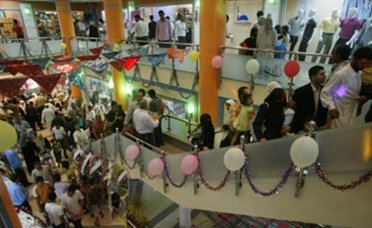Gaza Strip Mall Opens to Controversy
There’s usually a lot of fanfare surrounding store and mall openings in the Middle East these days. Normally, one marble-floored store outdoes another, with more space or a higher floor. One recent mall opening in an unlikely location has drawn attention not for its luxurious amenities, but for the fact that it exists at all.
 You may be familiar with the recently eased Israeli blockade of the Gaza Strip. The easing came after activists on a Turkish ship attempting to deliver aid to the region were killed by the Israeli military. The Israeli government says the blockade is to prevent supplies which can be used as weapons from getting to Hamas, the Gaza Strip government which is also considered a terrorist organization by the United States and the European Union. Controversy has arisen in the past as seemingly benign things like jam were included with concrete and building materials on the list.
You may be familiar with the recently eased Israeli blockade of the Gaza Strip. The easing came after activists on a Turkish ship attempting to deliver aid to the region were killed by the Israeli military. The Israeli government says the blockade is to prevent supplies which can be used as weapons from getting to Hamas, the Gaza Strip government which is also considered a terrorist organization by the United States and the European Union. Controversy has arisen in the past as seemingly benign things like jam were included with concrete and building materials on the list.
So it may be a bit of a surprise to see a 2-level mall with air-conditioning, full service supermarket and food court open for business. Shoppers who visit the mall’s website can even order some products online, and receive home delivery. {True/Slant}
While some Pro-Israeli bloggers have used the mall opening to challenge the frequent images of poverty that many associate with the Gaza Strip, many of the items – brought in through Israel’s Kerem Shalom crossing or smuggled in to the area through tunnels, are out of reach for a large part of the population. In 2009, unemployment was estimated to be at 40% and 70% of the population was estimated to be living below the poverty line. Electricity production was 212th out of 213 countries in the world. {CIA World Factbook}
One woman at the opening said she came to see lights and sit in the air conditioning because she didn’t have electricity at home. {FOXNews} For the 70% of the population without the resources to shop at the newly opened mall, the celebration is unlikely to last long. So who is in the 30% of the population that’s not living in poverty, presumably with the resources to actually shop? Hamas government officials, smugglers and foreign aid workers among others.
The new mall is a reminder that there’s always another side to alarming statistics: remember that prior to the World Cup in South Africa, the country was largely associated only with violence, an acrimonious past and AIDS; and closer to home, Detroit, a city which has had unemployment problems for years, has million dollar homes blocks away from run down apartment buildings. In Gaza, there is high poverty, but there are also business owners. They make more than most Gazans, and don’t live in poverty. They’re likely the type of people who will shop at the new mall. Even for these Gazans, toys, food and new clothes are probably not that important.
Rafiq Hassouna, a construction company owner whose gross income has fallen from $10 million 5 years ago to less than $1 million in 2010, isn’t hopeful. “We used to import steel, cement, building materials,” he says. “This is what we need and we still cannot bring these things in. Hamas have all the cement and steel they need. They get it through the tunnels from Egypt.
I feel there is no clear future for me or my kids. All my dreams for my business and my family are blocked.” {BBC}
